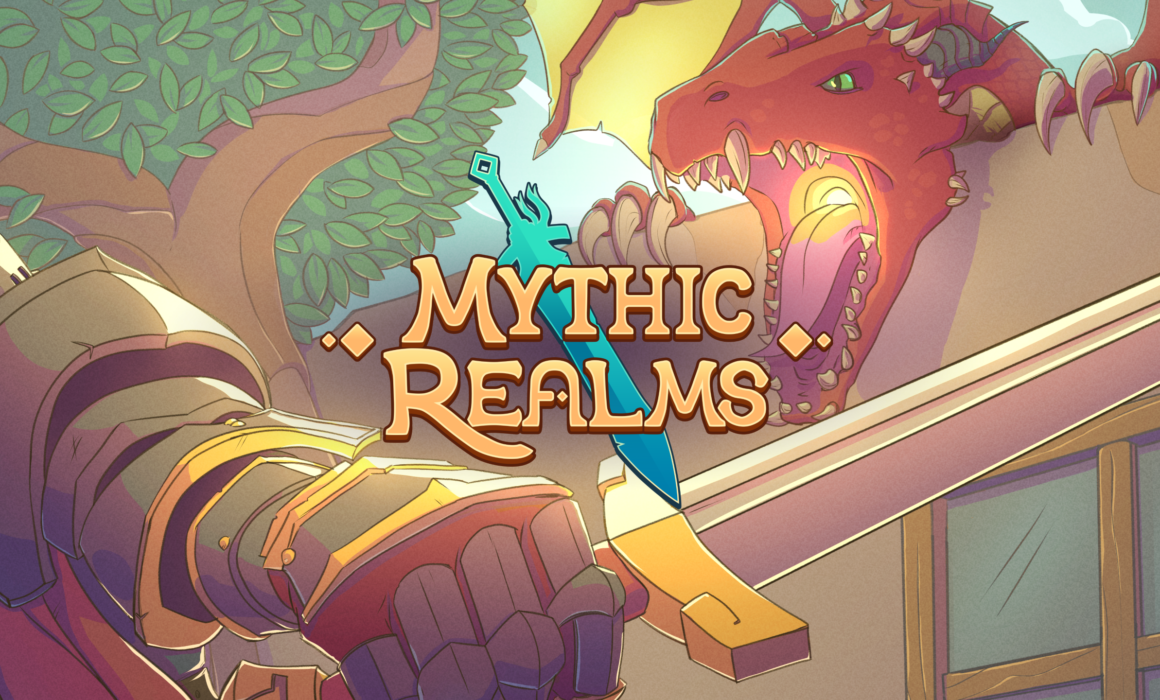The Reality of Designing for Realities: Oliver Awat on Building a Mixed Reality RPG
It’s been over a month since our studio Petricore released Mythic Realms, our mixed-reality roguelite RPG where your room becomes the battleground. While many players have taken up swords, spells, and staffs to defend their kingdom, most probably haven’t thought about the design challenge behind placing an enemy in your living room — or making sure you don’t trip over your coffee table while dodging its attacks.
Enter Oliver Awat, Petricore’s Lead Designer and Senior Developer, who helped shape Mythic Realms from the ground up. As both a designer and programmer, Oliver brings a unique perspective to game development. One that proved invaluable as we set out to make one of the first full-scale action RPGs built for mixed reality.

Meet Oliver! (It would be weird if we had someone else’s photo for this…)
Designing for the Unknown
Though Oliver has been designing games at Petricore for over a decade, Mythic Realms was his first RPG, and his first action-based room-scale title.
“We had all these wild ideas early on,” Oliver said. “There was a version of the dragon boss that would set half the room on fire, and a tail swipe you’d have to limbo under.” But reality (and a huge variety of room types) required compromise.

Our dragon, raining fire down into your living room
To make the game work for as many players as possible, enemies were scaled down, boss arenas rethought, and traversal redesigned. “We had to keep asking: how does this work in a small apartment? A bedroom? A wide-open space?”
The core challenge wasn’t just making a game, it was designing a game that could adapt to wildly different player environments without losing its magic.
From Puzzle Games to Procedural Floors
Before Mythic Realms, Oliver had mostly worked on puzzle games and multiplayer party titles. This project was different not just in genre, but in scope. With Mythic Realms this was also the first time Oliver worked full-time on an original title, in addition to a larger supporting team.

Operation DogFight, one of our previous titles Oliver worked on
To tackle the challenge of mixed reality game design, he broke the process into a series of systems:
- Divide every room into a grid
- Use dimensions and spatial semantics to place interactive elements
- Teach enemies how to understand and move through each unique space
- Build a fully VR kingdom hub to give players a consistent home base
- And finally: hope it all works (and feels good too!)
“I’ve always leaned technical as a designer,” Oliver said. “There’s no clearer path to making an idea real than just doing it yourself.” His ability to bridge both the design and development side allowed him to prototype ideas quickly, give more practical feedback, and solve problems that might otherwise require back-and-forth across disciplines.
Letting Go of Some Ideas, Holding Onto Others
Like most games, not everything made it into the final build. Early in development, the team had to cut a kingdom “create mode,” which was a builder-style system that interrupted the game’s pacing and proved hard to contextualize.
And while the game’s real-time combat now feels core to its identity, Oliver still wonders what a turn-based version might’ve been like. “There’s a part of me that would’ve loved a Mario & Luigi RPG-style battle system,” he said. “It probably would’ve been less immersive, but maybe more accessible in certain ways.”
Still, one mechanic stayed nearly untouched from concept to completion: fishing. “It’s a classic timing mini-game,” he said. “Though the fishing line did wig out early on… and getting the fish bounce right took a bit.”
Seeing the Future of MR
Working on Mythic Realms has solidified something for Oliver: Mixed Reality isn’t just a novelty.
“What was once a bed you’d have to exclude from your play space now becomes something you can stand on for high ground,” he said. “Mixed Reality adapts to the room you’re in and creates meaningful context for play. It’s not just a gimmick – it’s a new design paradigm.”

A platoon of ice slimes taking over your room, sorry – it’s theirs now.
There’s still a lot to discover about what MR games can and should be, but Oliver sees it the way early developers saw VR – full of potential, just waiting to be realized. “As early adopters of the tech, us and a lot of other talented developers have this monumental task of proving out what a game that’s designed 1:1 with your space in mind can be. And now with the upcoming Passthrough Camera API, I’m excited to see how MR will continue to shape up in the future.”
Given the incredibly positive response to Mythic Realms from reviewers and influencers alike, specifically for how it makes use of Mixed Reality, I’d say the future looks promising!



